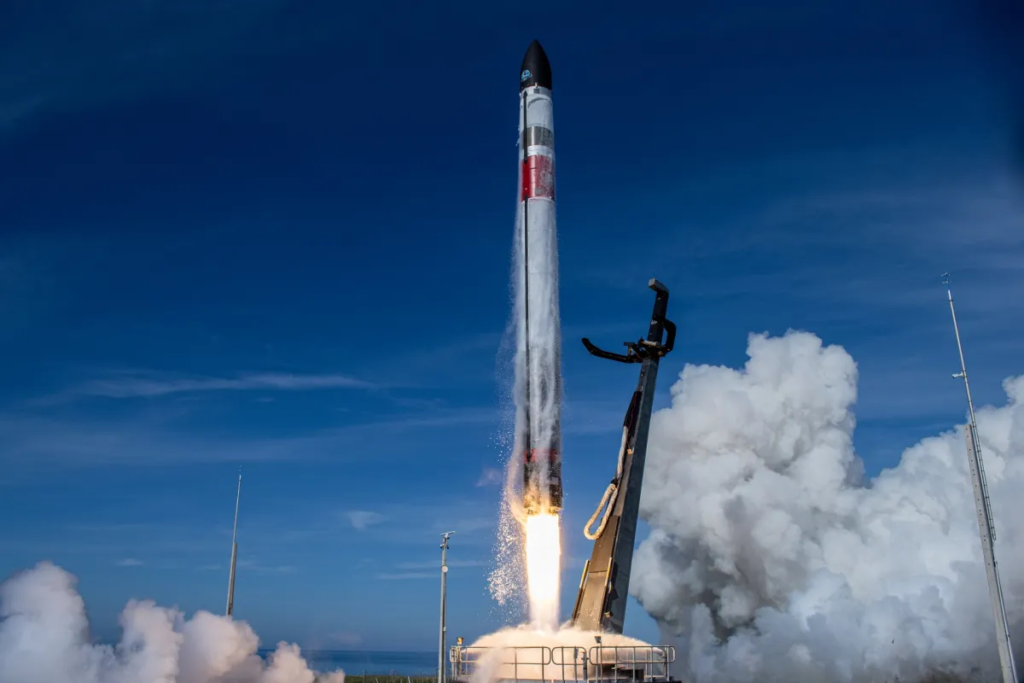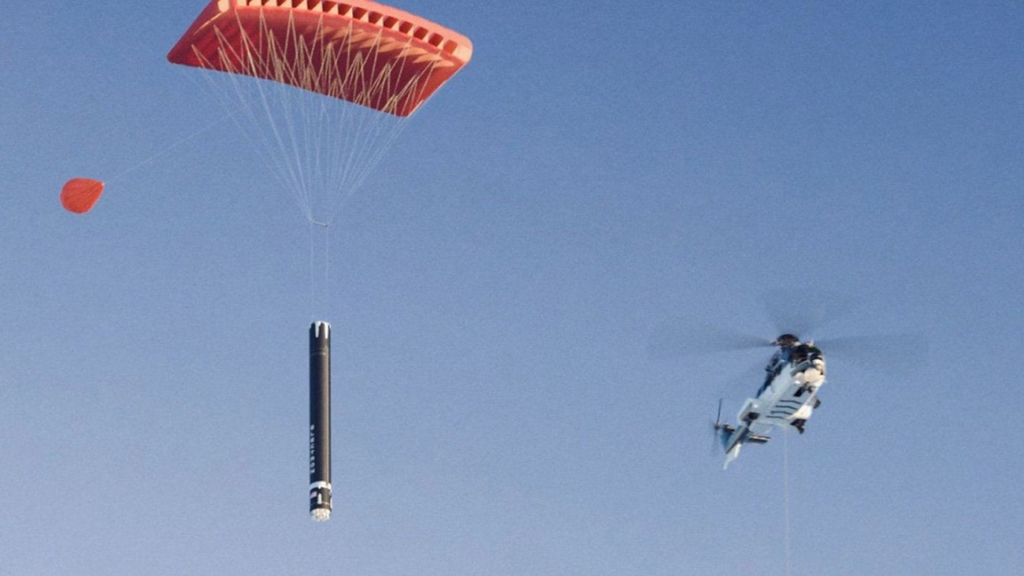
The First Reused Electron Could Launch This Year
For years now Rocket Lab has been trying to save both time and money by reusing the Electron launch vehicle. At the start, tests included deploying a parachute on the first stage after reentry and slowly impacting the water. Due to the small size of this rocket, propulsive landings like SpaceX’s Falcon 9 are not realistic.
Once Rocket Lab got comfortable with the parachute process, they tried helicopter catch attempts which provided varying results. Now Rocket Lab has already recovered entire Electron boosters and plans to do so in the next mission. Not to mention reports from the company that the first reused components will be used on an actual launch not long from now.
This would be a first for the company and officially make Electron a partially reusable launch vehicle. Combine this with the demand and launch site access and Rocket Lab could significantly increase launch cadence. Here I will go more in-depth into the next mission recovery plan, the first reused Electron booster launch, what to expect in the coming months, and more.
Upcoming Recovery

Only two days ago Rocket Lab announced its next Electron mission will deploy seven satellites to space and include an attempt to recover the rocket’s booster after launch. The ‘Baby Come Back’ mission, Rocket Lab’s 39th Electron launch, is scheduled to deploy from Pad A at Rocket Lab Launch Complex 1 in Mahia, New Zealand during a launch window that opens July 14, 2023 UTC.
Rocket Lab is also planning to conduct a marine recovery of Electron’s first stage as part of this mission. Rocket Lab’s recovery team will retrieve Electron using a customized vessel and transport the stage back to Rocket Lab’s production complex for analysis. Data from this recovered stage will inform Rocket Lab’s ongoing recovery and reuse program. The launch is a rideshare mission and will carry satellites for multiple customers. Rocket Lab CEO Peter Beck pointed out that “This mission demonstrates Rocket Lab’s ability to provide responsive space capabilities on accelerated timelines by making access to space possible for customers when they run into roadblocks. Electron is the world’s most reliable small launch vehicle and is demonstrating it can deliver customer’s payloads on their schedule” he said.
Because this launch features an Electron booster recovery attempt, the work will just be getting started after stage separation. Re-entering Earth’s atmosphere is a brutal experience. Electron’s first stage will be subjected to intense pressure and heat, experiencing flow temperatures in excess of 2400 °C and reaching speeds of 2350 m/s during its descent. Rocket Lab calls this potentially destructive process ‘The Wall.’ One of the ways we set out to survive ‘The Wall’ was by using a reaction control system (RCS) to position the stage as it falls. Using the RCS we are able to reorient the stage to an ideal angle as it descends. They’ve tested the RCS on two previous missions and data showed good positioning, but there’s nothing like getting the stage back to prove it. On Return to Sender, Stage 1 reoriented perfectly, with the RCS performing nicely to position the stage for the perfect re-entry angle of attack. This set them up well for the parachute deployment and eventually splashdown.
In the past Rocket Lab was considering using helicopters but that didn’t go so well. On the first attempt the rocket was caught however the pilot detected different load characteristics than expected and dropped the stage. In the second attempt last November, Rocket Lab called off the helicopter catch because of a momentary loss of telemetry from the booster. Interestingly, on the second helicopter catch attempt mission, Rocket Lab ended up realizing a different recovery option was even more plausible.
At the time Peter Beck was quoted saying, “This turned out to be quite a happy turn of events. Electron survived an ocean recovery in remarkably good condition, and in a lot of cases, its components actually pass requalification for flight. “Pending this outcome of testing and analysis of the stage, the mission may move us towards sticking with marine recovery altogether and introduce significant savings to the whole operation” he said. By now we know that these tests were successful and this splashdown recovery method yielded impressive results.
First Reused Electron

Since the second helicopter catch attempt and recovery of the stage that splashed down in the ocean, Rocket Lab has been testing different components to see whether or not they could fly again. The results have been good enough to the point where Rocket Lab is already planning a reused Electron booster launch by the end of this year.
Around two months ago in April, the company announced its taking the next major step in evolving the Electron launch vehicle into a reusable rocket by launching a pre-flown Rutherford engine. The 3D printed engine, previously flown on the ‘There and Back Again’ mission launched in May 2022, has undergone extensive qualification and acceptance testing to certify it for re-flight, including multiple full mission duration hot fires where the pre-flown engine performed flawlessly and on par with a new Rutherford engine.
With Rocket Lab’s propulsion team now giving the engine the green light for re-flight, it will be launched on an upcoming commercial mission scheduled for lift-off in the third quarter of this year. While the engine is ready for re-flight now, the Electron rockets scheduled for launch in the second quarter are already built with complete Rutherford powerpack assemblies so this pre-flown engine will join the production line to be integrated with an in-progress rocket. The engine is one of several recovered Rutherford engines that collectively have now been through many successful full duration hot fires to support testing and R&D efforts for recovery.
This is a very big deal as the main engines on the Electron booster are one of the most important components powering the entire booster. This is a first step toward entire booster reuse and prequalification.
Re-flying this engine is the latest plan within a reusability program that has seen Rocket Lab recover hardware and first stages from six Electron missions to date. In a statement the company said, “Extensive analysis of returned stages shows that Electron withstands an ocean splashdown and engineers expect future complete stages to pass qualification and acceptance testing for re-flight with minimal refurbishment. As a result, Rocket Lab is moving forward with marine operations as the primary method of recovering Electron for re-flight. This is expected to take the number of Electron missions suitable for recovery from around 50% to between 60-70% of missions due to fewer weather constraints faced by marine recovery vs mid-air capture, while also reducing costs associated with helicopter operations.
“Electron is already an established workhorse rocket that has been delivering frequent and reliable access to orbit for more than five years. By evolving it into a reusable launch vehicle we plan to further increase our already steadily rising launch cadence, offering more launch availability to our customers at a time when space access is severely constrained globally,” said Peter Beck. “Reusability for small rockets is immensely challenging as they simply don’t have the fuel margins that larger rockets have to enable propulsive landing. Despite this significant technical hurdle, our team has poured relentless innovation into our reusability program and proven it’s possible to bring home small rockets and run the engines as good as new. This is a major technical achievement and sets a new standard for small launch vehicles globally. We’re in this position thanks to our diligent engineers designing robust components and over-qualifying them from the outset of the Electron program to ensure reliability, setting them up well for reuse.”
On the engine test, the refurbished Rutherford engine passed all of the same rigorous acceptance tests Rocket Lab performs for every engine, including 200 seconds of engine fire and multiple restarts. Data from the test fire shows the engine produced full thrust of 21kNs within 1000 milliseconds of ignition and performed to the same standard of a newly-built Rutherford engine.
During the upcoming recovery mission, once the booster has splashed down, the team on board the “Catch of the Day” recovery vessel will work to locate Electron shortly after splashdown. They will then connect and secure the stage onto the ship before bringing it back to land and assessing its performance.
In one final quote, Peter Beck said, “We look forward to continuing to rewrite the rules of small launch through reusability, while using the extensive data and experience we’re gathering along the way to inform the development of our Neutron rocket which will be an even greater step forward with a fully reusable first stage, interstage and fairing.”
Conclusion
Rocket Lab is continuing to try different methods to make Electron reusability a reality. While helicopters didn’t quite work as intended, they are moving on to ocean recovery and soon will refly core Electron booster components. We will have to wait and see how it progresses and the impact it has on the space industry.
